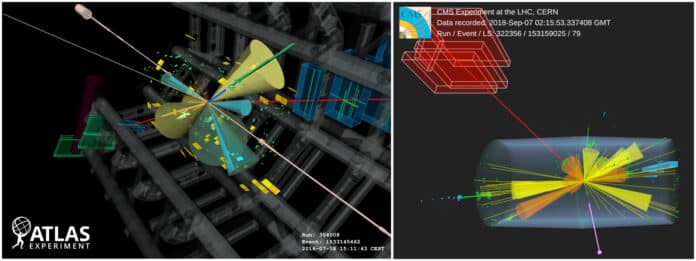The Standard Model predicts that two top quark-antiquark pairs can combine to form four top quarks at once. Four-top-quark production is tricky because the production rate is thought to be 70,000 times lower than that of top-quark-antiquark couples. ATLAS made earlier detections of this phenomenon in 2020 and 2021 and CMS in 2022. Yet, there had never been an observation before today.
Using data from collisions during Run 2 of the Large Hadron Collider (LHC), the ATLAS and CMS collaborations have observed the simultaneous production of four top quarks.
Four-top-quark manufacturing is not only uncommon but also notoriously challenging to see. To find a specific event, physicists hunt for its “signature,” or the characteristics of the decay’s final particles. They give them hints about the transient events they need to find. Each top quark breaks down into a bottom quark and a W boson.
The W boson can then decay into a quark-antiquark pair, a charged lepton, and a neutrino. As a result, the signature of four-top-quark events can contain between 0 and 4 charged leptons and up to 12 quark-produced jets. This makes it challenging to find the four-top-quark manufacturer’s signature.
ATLAS and CMS used cutting-edge machine-learning approaches to create algorithms that choose four-top-quark candidate events to aid in the search for these events. The analyses distinguish the four top-quark events from the background caused by other Standard Model processes with higher production rates using the unique four-top-quark signature with many electrons, muons, and (bottom-quark-tagged) jets. The event signatures containing two or more leptons were sought after by ATLAS and CMS.
AtLAS’s observation has 6.1 sigma, higher than the anticipated significance of 4.3 sigmas, and CMS’s observation has 5.5 sigmas, higher than the expected 4.9 sigmas, making them the first observations of this process. Both experiments’ results pass the necessary five-sigma statistical significance to count as an observation.
The first direct observation of four-top-quark production is an exciting new step in learning more about this fascinating particle. Both experiments look forward to continuing to study this phenomenon during LHC Run 3.
